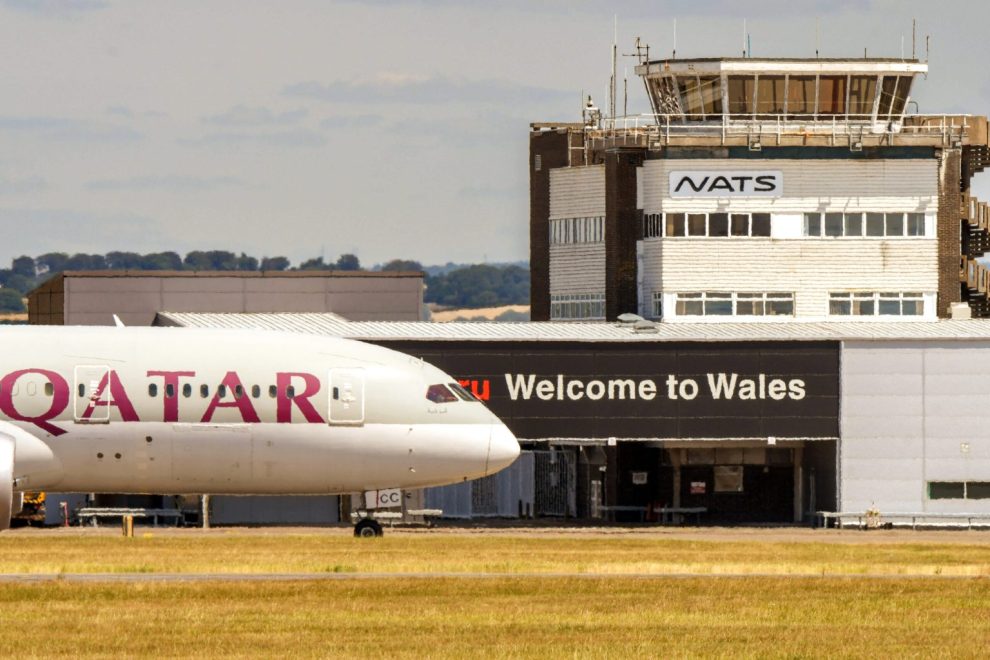IT WAS highlighted this week that Wales is significantly lagging behind other UK nations in terms of airport capacity and usage, posing a stark disadvantage to its economy and global connectivity.
This concern is highlighted by the fact that while English, Scottish, and Northern Irish airports facilitate approximately four passengers per head of population annually, Welsh airports manage less than a tenth of that figure.
Cardiff airport is still struggling post-Covid, and Qatar airlines – who offer connections to most major international routes – failed to make a return to Cardiff in December 2023 despite many promises.
As Wales stands on the brink of potentially transformative changes in its aviation sector, the upcoming general election presents an opportunity for UK-wide support for a project that could significantly ‘level-up’ the region. With the new First Minister set to take office, prioritising a bold aviation strategy could mark one of the most substantial economic advancements for Wales since devolution.
Joel Strange, a director at Grant Thornton’s economic consulting practice, has emphasied the importance of this pivotal moment for Wales, advocating for a comprehensive and forward-thinking approach to aviation that could redefine Wales’s place in the global community.
Writing in an article for Business Live, he says that the central issue appears to be the location of Wales’s sole international gateway, Cardiff Airport, which is situated over ten miles from the city center and major transport links, essentially leaving it without a significant population base to serve. This geographic disadvantage has been linked to diminished economic benefits for Wales, as academic research from the US and Europe suggests a direct correlation between international airport access and various economic metrics, including productivity, GDP, wages, and employment.
With the majority of Welsh passengers and international visitors relying on airports in England, there is a growing concern that the current situation undermines efforts towards economic ‘levelling-up’ within the UK. Moreover, Wales’s inbound tourism sector is believed to be operating below its potential due to the lack of direct international travel options.
In light of these challenges, discussions are underway regarding the future of aviation in Wales. Proposals include the development of a new airport hub located between Cardiff and Bristol, ideally near the Severn Bridge, irrespective of the side of the border. Such a move could potentially consolidate Cardiff and Bristol airports into a single, more accessible location, which could handle over 20 million passengers annually, thereby transforming it into one of the UK’s largest airports outside London.
This proposition is not without precedent; cities and regions around the world have seen benefits from sharing airport facilities, with notable examples including the EuroAirport Basel-Freiburg-Mulhouse tri-national airport. The benefits of a consolidated airport in south-west Britain could be manifold, encompassing enhanced destination access, operational efficiencies, reduced environmental impact, and financial gains.
However, the idea of a new airport has been met with skepticism in the past, attributed to the perceived viability of Cardiff Airport in its current location and capacity constraints at Bristol Airport. Nevertheless, the evolving landscape, including the development of the South Wales Metro and the approaching capacity limits of Bristol Airport, has reignited discussions about the feasibility and necessity of a new aviation strategy for Wales.
The Welsh Government, having previously shown leadership through initiatives like the South Wales Metro, is now faced with the task of exploring long-term options for the region’s aviation assets. This exploration will need to consider environmental impacts, stakeholder collaboration, and the potential alignment of commercial incentives, especially with entities such as the Ontario Teachers’ Pension Plan, the owners of Bristol Airport.

















